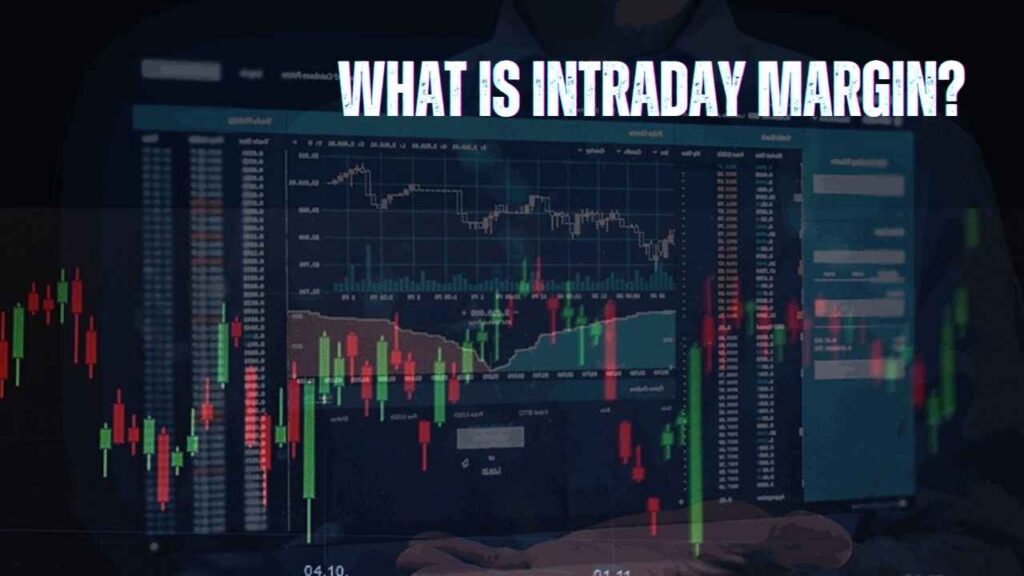What is Intraday Margin? If you find the answer to this question, then you are in the right place.
Intraday margin is a key term in the active trading world. Whether you’re an experienced day trader or just starting and want to know how margin operates, understanding what intraday margin is and how it works can have a huge bearing on your trading strategy. In this detailed guide, we’ll explore the definition, calculation, advantages, and disadvantages of intraday margin and advise on how to manage your trading capital best.
Intraday trading refers to buying and selling securities during the same trading day, riding short-term fluctuations in the market. Brokers provide a mechanism for such transactions by asking traders to have some collateral called the intraday margin. The intraday margin enables you to borrow against your trades without paying the full price of the securities initially. Intraday margin is important for day traders as it assists in controlling risk, optimizing capital utilization, and conforming to regulatory guidelines.

What is Intraday Margin?
Intraday margin refers to the minimum equity you need to hold in your trading account to conduct intraday transactions. It’s usually quoted as a percentage of the overall value of positions you carry on your trading day. It serves as a buffer against losses and lets brokers offer leverage, which helps you trade positions larger than what your initial funds would otherwise support.
- Leverage: Intraday margin enables traders to multiply their exposure to movements in the market using only a proportion of the overall transaction value.
- Collateral Requirement: It acts as collateral for your trades that you carry out during the day, ensuring that you are funded adequately to meet any possible losses.
How Intraday Margin Works
When you place an intraday trade, your broker keeps aside a certain percentage of the total value of the trade as margin. Say if your broker demands a 10% intraday margin, and you have executed a trade for ₹1,00,000, you must have at least ₹10,000 in your trading account. The margin is returned to your account once you close your intraday positions at the end of the trading day.
- Dynamic Calculation: Margin requirements can differ according to market volatility, the nature of the security, and the policies of your brokerage firm.
- Real-Time Adjustments: Brokers constantly keep track of the market and might modify margin requirements to limit risk, particularly during periods of high volatility.
Benefits of Using Intraday Margin
1. Increased Leverage
Intraday margin allows you to manage bigger positions with relatively less capital. This leverage can amplify your profits on winning trades.
2. Efficient Capital Utilization
By committing only a fraction of your overall trading value as margin, you can keep your capital liquid and use your capital across several trades during the day.
3. Risk Management
The margin requirement acts as a cushion, with the goal of providing sufficient funds to absorb potential losses and keeping the trader and broker away from being overly exposed to risk.
4. Enhanced Trading Flexibility
Traders can take advantage of higher numbers of trades in one day with reduced capital requirements, having the potential to capture additional opportunities when dealing with highly volatile markets.
Risks and Considerations of Intraday Margin
Although intraday margin is very beneficial, it has associated risks:
1. Amplified Losses
Leverage does not just increase gains; it can also maximize losses. If the market turns against your positions, your losses can even exceed the initial margin, resulting in a margin call or compulsory liquidation of your positions.
2. Market Volatility
Extremely volatile market conditions may lead to sudden changes in your account value, and there are greater chances of violating margin requirements and paying extra costs.
3. Broker-Specific Policies
Margin requirements vary from broker to broker. Some brokers might have tighter policies or higher margin percentages, which may influence your trading strategy and allocation of capital.
4. Short-Term Focus
Intraday trading requires quick decision-making and execution. Such a high-speed environment can make you take impulsive decisions unless you control it with a thought-through plan.
How to Manage Intraday Margin Effectively
- Monitor Your Trades: Keep a constant track of your positions and account balance to keep yourself within the margin requirements.
- Set Stop-Loss Orders: Placing stop-loss orders can protect you from losses, which keep your account balance above the margin requirement.
- Understand Broker Policies: Get to know your broker’s margin policies, requirements, and the margin management tools offered.
- Stay Updated on Market Conditions: Monitor market volatility and trends, as they can affect margin requirements and trading results.
Learn More:
- Difference in Expense Ratio Between Direct and Regular Mutual Funds
- Best Small-Cap Index Funds
- 10 Debt Mutual Funds That Outperformed in the Last 1 Year with 10% to 24% Returns in 2025
Final Thought
Intraday margin is a valuable instrument in a trader’s toolkit, with the ability to generate increased returns through leverage while allowing effective capital management. But it also carries inherent risks, especially in volatile markets. With knowledge of what intraday margin is, how it operates, and with strong risk management, traders can employ it to their benefit. Remember, day trading success involves not just leveraging opportunity but also effectively managing risk. Always remain well-informed, stick to your trading plan, and constantly monitor your account to protect your investments.
Frequently Asked Questions (FAQ)
What is intraday margin?
Intraday margin is the minimum amount of equity required in your trading account to execute trades within the same trading day, acting as collateral for leveraged positions.
How does intraday margin enhance trading?
It allows traders to control larger positions than their available capital, increasing the potential for profits while ensuring that there is a financial buffer against losses.
Can I use intraday margin for long-term investments?
No, intraday margin is designed specifically for day trading. All positions are typically closed before the end of the trading day, and margin does not carry over to the next day.
How can I manage the risks associated with intraday margin?
Implement risk management strategies such as setting stop-loss orders, monitoring your trades closely, and understanding your broker’s margin policies to avoid margin calls and unexpected losses.
What happens if my account falls below the required intraday margin?
A: If your account balance drops below the required margin, you may face a margin call, prompting you to deposit additional funds or risk automatic liquidation of your positions.










